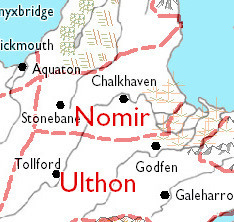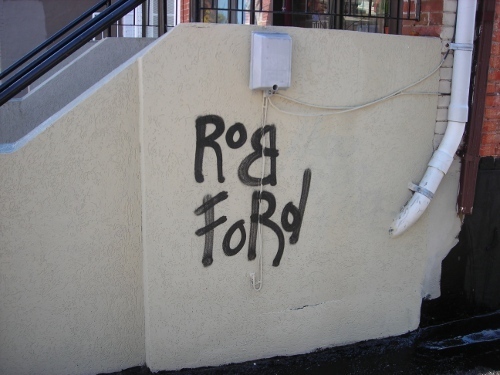Robin D. Laws's Blog, page 113
May 6, 2011
The Birds
May 5, 2011
Korad: Polling Nomir

Now it's time to decide on the customs, folkways and defining facts of the people of the partially swampy and thoroughly populous region of Nomir. Poll closes on Monday evening (Eastern), with the top half or so of choices making the cut.
Again I must gently observe that several of you hail from a strange dimension where a 12-word sentence is much longer than it is in this reality.
View Poll: Polling Nomir
May 4, 2011
Pelgrane Week at Flames Rising

Our horrorific pals over at Flames Rising have relaminated their Quade Diagrams, sprayed the festive luminol, and strung the mantels with rugose tendrils as part of their week-long celebration of all things Pelgrane Press. With new content dropping each day, you can on this glorious Humpday both catch up and brace yourself for more. Did I mention the chance to win fabulous prizes? Why, I believe I just did! All you have to do is tell the implacable judges what you dig about your favorite fictional detective. Details here!
May 3, 2011
Dramatic Poles

I've talked before about the iconic characters and how they are driven by an ethos. By recapitulating it, they triumph over external obstacles, affirm their selfhood, and restore order.
But what drives dramatic characters?
When we care about a fictional character, we hope for X and fear for Y. X is the positive condition; Y is its opposite. In a procedural, we hope the character will succeed in reaching his procedural goals and fear that he will fail. In a drama, we perceive a positive and a negative potential. We want the character to reach the former and avoid the latter.
Compelling ongoing dramatic characters possess dual natures, or internal oppositions. We want them to overcome one of these and realize the other. Another way to express this is to say that the characters are torn between two internal forces or impulses. These are the poles of a dramatically active character.
Rick Blaine (Casablanca) selfishness or altruism?
Shelley Levene (Glengarry Glen Ross) winner or loser?
Nora (A Doll's House) subservience or selfhood?
Tony Soprano: family man or Family man?
Nate Fisher: (Six Feet Under) freedom or responsibility?
Frank Gallagher: (Shameless US) dissolution or dignity?
Walter White (Breaking Bad) virtuous weakness or anti-social power?
Our feelings toward the two poles may be clear-cut, or divided. Dramatic characterization deepens, and our reactions to it become more complex, when our reaction to the dual nature becomes ambiguous. Part of us wants Tony to be the good family man, but part of us takes dark vicarious pleasure in his sociopathic side.
May 2, 2011
The Birds
April 29, 2011
Korad: Lus Defined, Nomir Up For Grabs

Through a mistake in my poll selection, respondents were limited to only a single favorite choice each when choosing the salient cultural features of the mostly rural, variably vegetated region of Lus. A depopulated poll for a depopulated region! Any idea garnering 4 or more votes made the final cut, leaving us with the following passage for the Korad setting bible:
The pacifistic and friendly Lus follow no social structure larger than the village. Most humans are nomadic tribesmen, highly prized as wilderness scouts. They stole the secrets of fire from a God, as revenge each human settlement can only ever have one fire.
The seacoast is home to the empire's finest oysters, and oyster farming is a growth industry.
The city of Apewood is ruled by apes, whose will is discerned through examination of things dropped from trees. who rule the city of Apewood manufacture optical devices, mostly to correct their universal nearsightedess. A secret and sinister ape cult, bent on domination, derives occult power from the ritual consumption of human flesh.
Now it's time to propose ideas for Nomir, the region to Lus' south.
Partly swampy and home to the cities of Chalkhaven and Stonebane, it is one of the two most populous regions of Korad. It is the only such province inhabited chiefly by humans. Ulthon, to the south, is the homeland of the carrion-eating Veytikka.
Chalkhaven
An exiled potential leader on the outs with the imperial leadership gathers supporters here. Chalkhaven houses the Invisible College, though nobody can tell you where it is. It receives an influx of refugees from the seemingly nonexistent coastal city of Seadelve.
Stonebane
Magic, including waterstones and the like, doesn't work here, making it an ideal venue for diplomatic and trade negotiations. Two opposed religions both claim it as their mecca. Under the city is a bejeweled cavern containing something its leaders won't talk about.
For Lus we strayed a bit from the main point of this exercise, which is defining the national cultures of this distinct regions. So let's focus on mores, customs, social organization, and the like as we discover the traits that make a Nomirian a Nomirian.
As always: keep your idea brief, so I can fit it into next week's poll—12 words or less. One idea per commenter. Pitch standalone ideas rather than building on someone else's proposal. Get them in before early Monday evening (eastern time.)
April 28, 2011
Graffiti Exegesis

Downtown Toronto has a tagging problem. I see it in my own beloved nabe, where the residential, commercial and institutional sit cheek by jowl. The longstanding social contract, in which homes were exempted from the spray can's black wrath, is now blithely ignored by a new generation of graffitists. This is likely connected to gang competition centered around a couple of nearby high schools.
If reducing tagging was easy we wouldn't see the stuff. One way to increase tagging, however, was established by former police chief Julian Fantino. He declared a war on graffiti during his tenure in the early oughts. The immediate result was a visible uptick in tagging, with his name often prominent in the scrawls.Fantino has since moved on to Federal politics, where no one has yet had the heart to tell him that within the Canadian system one does not typically aspire to the post of Generalissimo.
Toronto's recently minted mayor, Rob Ford, lofted himself to office on a platform of suburban fear and loathing toward the city's vibrant urban core. Along with such nemeses as bike lanes and city-mandated fees for plastic bags, he has launched his own crusade against graffiti. Businesses have been peppered with clean-up notices. In their zeal to enforce the mayor's initiative, officials haven't taken the time to distinguish between tags and murals, or unsanctioned murals and those commissioned by property owners.
Hence:
See also:
April 27, 2011
My Favorite Mistake

One key distinction I always try to make when conducting in-house playtests is between the player's consciously verbalized reactions and how they respond emotionally during play. Articulated responses can be invaluable, but require judicious sifting. In the well-known focus group effect, when people feel an obligation to make comments, or a desire to be heard, they will generate responses—which may or may not be in accord with their actual preferences. What you want from an experience and what you can articulate about can match up or diverge. To tell which is which, look at players' nonverbal responses.
This isn't always an easy thing to do. The observing designer must learn to look past his own emotional responses to accurately observe those of other participants. One's own defensive urges can be as misleading as a player's over-thought comments. Attachment to roleplaying theories and similar predigested intellectual frameworks can also serve as a barrier to understanding. This is as true for players as designers. Through forum discussion and the like, one might convince oneself that one mode of play is always objectively wrong, even if that is the style you might, in certain contexts, very much enjoy.
Divining state of mind becomes a special challenge when players are having an enjoyable, but internalized, experience. One factor I've underestimated more than once is the reward players derive from an extended character creation process. Intellectually I reckon that players want to get to the game as quickly as possible. But in certain games the creation process is at least as compelling as what comes afterwards. In fact, the game itself becomes richer when players have the time to fully engage their creativity.
As a GM, time spent during character creation can seem dull. You don't get to join in until it's over. That doesn't mean the players aren't having a rich experience. The designer/GM must see past his own wandering attention to see how engrossed the players are. Prep can be a tedious slog, or it can be play. If it is play, a design might be ill-served by streamlining efforts that rush players through a process they'd sooner linger over.
April 26, 2011
The Birds
April 25, 2011
See P. XX

You can tell Pelgrane Press is on a roll when the installments of See P. XX fall thick and fast. The latest installment includes two pieces from yours truly.
The column takes on Alternate Armitages: ideas on transporting its player-driven handout approach to other games.
All the Justice Credits Can Buy excerpts, and lays out the core concepts of, Ashen Stars, the upcoming GUMSHOE space opera game.
And that's just for starters. Graham Walmsley also makes a double appearance, excerpting his Cthulhu Apocalypse series and showing you how to hack his Cthulhu Dark system. Steve Dempsey shows you how to create your own GUMSHOE settings. Matthew Sanderson examines what happens when the Esoterrorists shatter the delicate membrane between our world and the dread realm beyond. And Beth Lewis steps up for an elusive Simon Rogers to provide the View From the Pelgrane's Nest, with progress reports on a wealth of exciting new projects in progress.
Check it out!






